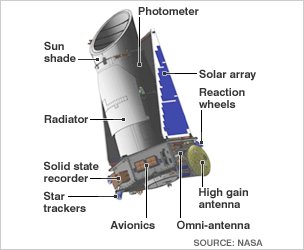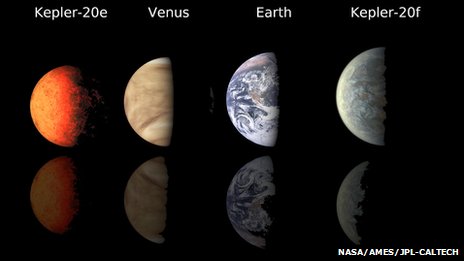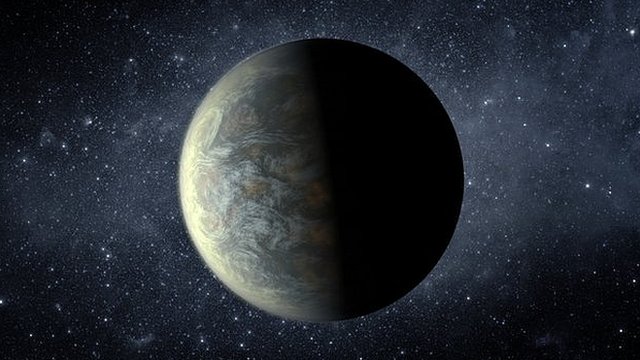First Earth-sized planets spotted
The planets may once have harboured conditions favourable to life
Astronomers have detected the first Earth-sized planets, which are orbiting a star similar to our own Sun.
In the distant past they may have been able to support life and one of them may have had conditions similar to our own planet - but they now lie outside their star's "habitable zone".
They have described their findings as the most important planets ever discovered outside our Solar System.
Details of the discovery are outlined in the journal Nature.
Dr Francois Fressin, of the Harvard-Smithsonian Centre for Astrophysics in Cambridge, US, who led the research, said that the discovery was the beginning of a "new era" of discovery of many more planets similar to our own.
Both of the newly discovered planets are now thought to be too hot to be capable of supporting life.
But according to Dr Fressin, the planets were once further from their star and cool enough for liquid water to exist on their surface, which is a necessary condition for life.
"We know that these two planets may have migrated closer to their Sun," he told BBC News. "(The larger of the two) might have been an Earth twin in the past. It has the same size as Earth and in the past it could have had the same temperature".
Rock and a hard placeOne of the planets, named Kepler 20f, is almost exactly the size of the Earth. Kepler 20e is slightly smaller at 0.87 times the radius of Earth and is closer to its star than 20f.
Kepler Space Telescope

- Stares fixedly at a patch corresponding to 1/400th of the sky
- Looks at more than 155,000 stars
- Has so far found 2,326 candidate planets
- Among them are 207 Earth-sized planets, 10 of which are in the "habitable zone" where liquid water can exist
They are both much closer to their star than the Earth is to the Sun and so they complete an orbit much more quickly: 20e circles its star in just six days, 20f completes an orbit in 20 days whereas the Earth takes a year.
Dr Fressin says that the planets' composition may be similar to Earth's with a third of it consisting of iron core and the remainder consisting of a silicate mantle. He also believes that the outer planet (Kepler 20f) may even have developed a thick, water vapour atmosphere.
The discovery is important because it is the first confirmation that planets the size of Earth and smaller exist outside our Solar System. It also shows that the Kepler Space Telescope is capable of detecting relatively small planets around stars that are thousands of light-years away.
The telescope has spotted more than 2,300 planet candidates, which must then be confirmed by other telescopes in space and back on Earth.
Of the 36 of these that have now been confirmed, only Kepler 20e is smaller than Earth.
Up until now, the most significant discovery, also by a group including Dr Fressin, was of a planet nearly two-and-a-half times the size of Earth that lay in the so-called "Goldilocks zone".
This is the region around a star where it is neither too hot, nor too cold, but just right for liquid water and therefore life to exist on the planet.
But Dr Fressin believes that the two new planets are a much more important discovery.
The telescope is scanning 150,000 stars and Professor Andrew Coates of the Mullard Space Science Laboratory in Surrey believes that they will soon find a planet that is not only the size of Earth, but is also in the Goldilocks zone - and perhaps even Earth-like in its composition and atmosphere.
"With every new discovery we're getting closer to the 'holy grail' of an Earth-like planet around a Sun-like star," he said.

Simulations of the planets' appearances show their relative sizes
BBC © 2011 The BBC is not responsible for the content of external sites. Read more.

